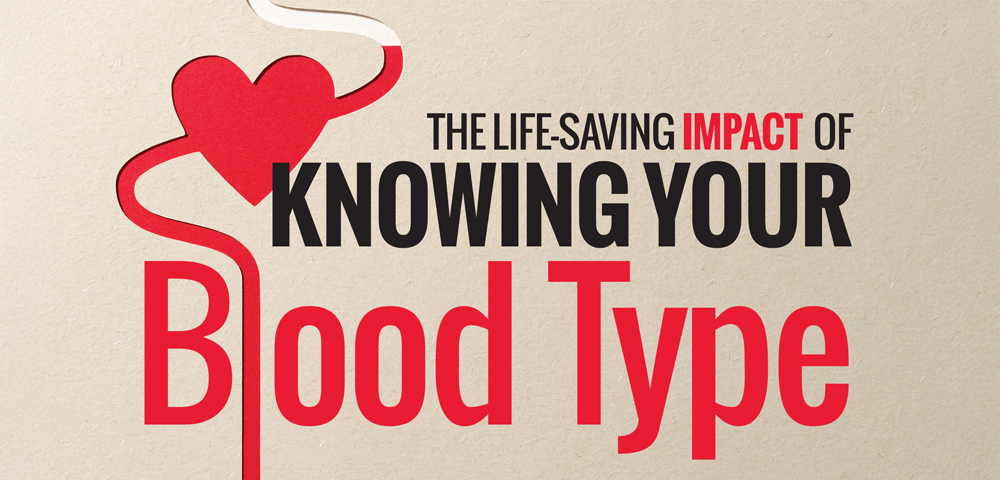
Researchers have long speculated that blood type may affect stroke risk.
Stroke is a complex condition impacted by genetics, lifestyle, and underlying health conditions. More recently, blood type has been added to this list, and it’s suggested that certain blood types may increase our susceptibility to this potentially life-altering and deadly medical emergency.
Blood type is determined by the presence or absence of specific antigens on the surface of red blood cells. These antigens, A and B, dictate whether a person has type A, B, AB, or O blood. Researchers have long speculated that blood type may affect stroke risk because it influences clotting, blood flow, inflammation, endothelial function, and overall vascular health.
To compound matters, stroke cases are rising at a faster rate in younger-to-middle-aged adults – and it’s happening globally. Hailey Bieber recently shared that she had a mini-stroke at the young age of 25. Could it be the blood type that is contributing to this?
WHAT YOUR BLOOD TYPE SAYS
Blood type A. Several studies found that people with blood type A have a higher risk of developing ischemic (clotting) stroke compared to those with other blood types. More recently, it was discovered that people with a specific variant of blood type A were more likely to have a stroke before age 60.
Blood type B and AB. These blood types are associated with an increased risk of both ischemic and hemorrhagic (bleeding) strokes. However, this risk is still lower than for blood type A. Additionally, individuals with blood type AB have been shown to be more susceptible to cognitive impairment, which is linked to a higher risk of stroke.
Blood type O. Also known as universal donors, people with blood type O appear to have better blood flow and a lesser tendency for clot formation. A 2016 study found that people with blood type O had a significantly lower risk of stroke compared to all other blood types.
While blood type is undoubtedly a factor influencing stroke, it is important to recognize that it alone cannot predict stroke risk with certainty. Here is a summary of things to consider implementing, especially if you have a family history of stroke.
Control blood pressure and blood sugar. High blood pressure is the leading modifiable risk factor for stroke, while high blood sugar damages blood vessels, leading to poor circulation. Managing both is one of the most critical steps in reducing stroke risk.
Quit the habit. Smoking is the second leading risk factor for stroke as it damages blood vessels, increases blood pressure, and promotes clot formation.
Drink tea. Greater tea consumption may help reduce the rate of stroke in both men and women. Additionally, stroke survivors who drank seven or more cups of green tea daily lowered their risks of multiple causes of death by 62%.
Do cardio for your cardio. Regular physical activity is vital for stroke prevention because it helps control blood pressure, manage weight, improve circulation, and reduce stress.
Watch your medications. Blood thinners can make a bleeding stroke more likely, while estrogen-containing drugs, from birth control to hormone replacement, can increase your odds of a clotting stroke.
SUPPLEMENTS FOR PREVENTION
Folic acid may significantly reduce stroke risk by 10%, likely by reducing homocysteine levels, while vitamins C and D positively influence blood pressure and inflammation.
Omega-3 fatty acids may reduce the risk of stroke by improving blood vessel health, reducing inflammation and lowering blood pressure and cholesterol levels.
Magnesium helps regulate blood pressure, and low levels of magnesium have been associated with an increased risk of stroke.
Phytonutrients found in turmeric, garlic, and Gingko biloba may help reduce inflammation, improve blood circulation, and reduce blood viscosity and blood pressure, all of which may reduce the risk of stroke.
Know your blood type and work with a qualified health care practitioner.
What we know is that people with blood type A have the highest stroke risk, followed by B and AB, while blood type O may offer some protective benefits. However, blood type is only one piece of the puzzle. Working with your health care practitioner to manage other stroke risks, such as weight, diet, stress, and sleep, can help provide the best defense against stroke.












